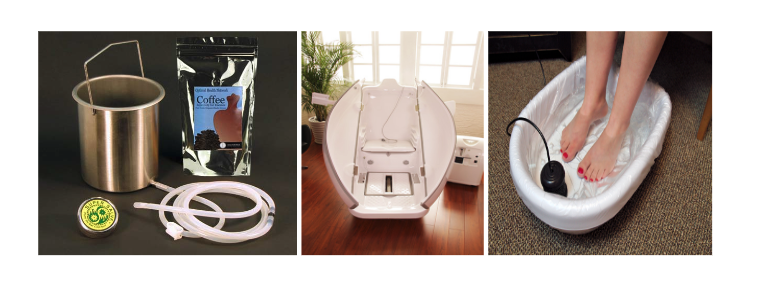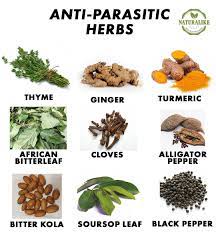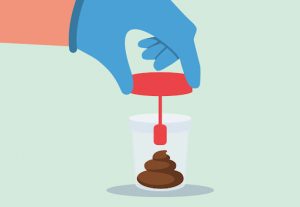By Carrie Rutledge, Longevity Patient Coordinator
Who are the largest consumers of saturated fat in the world? It may surprise you to know that Spain, France, and most European countries are some of the biggest consumers of dietary saturated fats[1]; yet are leading in health outcomes. In reference to the 2019 global report on healthiest countries in the world based on a range of factors (the United States didn’t make the top 20), Spain is in first place, with Italy right behind and France at number 12 [2].
It’s important to understand that European countries currently ban several types of pesticides and artificial ingredients; France, Italy and Spain also cook their foods with olive oil, butter, and animal fats. In fact, a roux in France is commonly made with butter, bacon drippings or lard. The most common cooking oil for Americans is vegetable oil. Soybean, canola, safflower, sunflower, corn, rice bran, and grape seed oil have been spouted as “healthy” but may be causing Americans to suffer from inflammation including high rates of autoimmune disease. Moreover, it is nearly impossible to dine out in America without consuming these oils.
Longevity in the United States has not improved much over the last few centuries. In fact, if you look back at the signers of the Declaration of Independence, 23 out of 56 lived past their seventies and 35 of them lived into their sixties. This was in 1776, before plumbing, infrastructure, antibiotics, and the numerous medical interventions we have today. One would assume with all these interventions that Americans would be some of the healthiest people on the planet. So, the question remains why are Americans still suffering from chronic inflammatory diseases including high rates of autoimmune disease? Could it be the highly processed, industrialized vegetable oils we are ingesting daily?
The History Behind Vegetable Oil
Americans slowly began introducing vegetable oils for cooking in the early 1900s, and we began replacing animal fats for cooking in the 1980s. In 1990 McDonalds replaced beef tallow with 100% vegetable oil. Today, most restaurants will use highly refined vegetable oil for cooking and frying.
The refining process of vegetable oils includes bleaching, degumming, and deodorizing to make these oils edible[3]. Once these oils are bottled and shelved, they still contain many inflammatory and toxic components. A study done by the Journal of the American Oil Chemists’ Society, showed that cold-pressed vegetable oils contain pesticides, PBDEs, PCBs, and PAHs. All are regarded as hazardous chemical contaminants.[4]
Moreover, Global Data, found that the United States and the United Kingdom have a higher prevalence of inflammatory autoimmune diseases compared to other countries.[5] The use of vegetable oils in America, specifically soybean and canola oil, may be contributing to the rise in the various inflammatory conditions we see today. Specifically, the rise in auto-immune disease and allergic conditions.
The Necessity of Essential Fatty Acids
It’s important to understand that the human body requires Essential Fatty Acids (EFAs) to function. EFAs are Polyunsaturated Omega 6 (Linoleic Acid and Arachidonic Acid) and Omega 3 fatty acids (EPA, DHA and ALA (Alpha-linolenic acid)) that must be acquired from the diet because the human body cannot make them on their own. While scientists say that EPA and DHA are not essential because the human body can convert ALA into EPA and DHA, the conversion rate is low to none for most individuals. EFAs are precursors to eicosanoids which are cell signaling molecules responsible for building cell membranes, regulating many inflammatory processes and vasodilation. [6]
Omega 3 fatty acids are anti-inflammatory and are the primary component of neurons in the brain and extremely important for fetal and infant brain development. Sources of Omega 3 fatty acids EPA and DHA are human milk, oysters, and fish. Sources of Omega 3 Alpha-linolenic acid are flaxseed, wheat germ, walnuts, and chia seeds. Omega 3 also comes from canola oil in the form of Alpha-linolenic acid; however, it is highly processed, oxidizes easily and the conversion rate is very low.[7] Omega 6 fatty acids are pro-inflammatory meaning they are required for the inflammatory response. Omega 6 linoleic acid and Arachidonic acid sources come from most vegetable oils including soybean oil and sunflower oil, poultry fat, meat, eggs, nuts, and seeds.
The problem we are seeing in the United States today is an imbalance of these essential fatty acids. History shows that 100 years ago humans had a ratio of around 4:1 in favor of omega-6 fatty acids. Today, due to the overuse of industrial seed oils, nut milks, nut butters and the decreased consumption of seafood, many Americans have a ratio of 20:1 or higher. [8]
Maintaining a low Omega 6 to Omega 3 ratio in Relation to Autoimmune Conditions
Studies are showing that maintaining a lower omega 6: omega 3 ratio at a level of 4:1 is effective in reducing inflammation; whereas a higher ratio is associated with increased inflammation, allergies and autoimmune disease.8 Scientists estimate that our ancestors in the Paleolithic era consumed anywhere from 660mg to 14,250mg of omega 3 fatty acids per day. Today, the decreased consumption of marine omega-3 and an increase in the consumption of omega-6 through industrial seed oils which contain a ratio of 60:1; we have seen a dramatic increase in pro-inflammatory autoimmune conditions such as Rheumatoid Arthritis, Crohn’s Disease, asthma, and allergies.8,10
Clinical studies are showing that Omega-3 fatty acids are able to reduce inflammation and may improve symptoms in individuals with Rheumatoid Arthritis, a condition in which the immune system attacks the lining of joints causing inflammation and pain. In one study composed of 68 Rheumatoid Arthritis patients, 34 were put on an anti-inflammatory diet with less than 90mg/day of arachidonic acid (omega-6), the other group followed a standard American diet and patients in both studies were given placebos or fish oil capsules. The study showed that those who had a diet low in arachidonic acid, supplemented with fish oil and followed an anti-inflammatory diet saw a significant decrease in pain and inflammation. [9]
Furthermore, Crohn’s patients also saw a decrease in inflammation when lowering omega-6 fatty acids in their diet. The primary mechanism for which Omega-6 fatty acids contribute to the inflammatory response in a Crohn’s patient is through the activation of Nuclear Factor-Kappa Beta (NF-kB), a transcription factor that promotes inflammation. The cells and macrophages of Crohn’s patients have an increase of TNF-alpha and Interleukin-1, which may promote further activation of NF-kB. Studies show that oxidative stress is increased in Crohn’s cells exposed to omega-6 (linoleic) fatty acids. The data from the study implies that dietary restriction of Omega-6 fatty acids in the form of oxidized vegetable oils along with arachidonic acid inhibitors while increasing antioxidants and omega-3 fatty acids, may provide relief for Crohn’s patients.8,[10]
Likewise, studies are showing the increased consumption of oxidized omega-6 fatty acids are correlated with an increase in allergies such as asthma and eczema because alpha-linoleic acid and linoleic acid compete for the same enzymes. Moreover, the increased intake of omega-6 fatty acids, provide high amounts of linoleic acid, which competes with EPA and DHA in the membrane of the cell. A low intake of omega-3 fatty acids will lead to an increase in omega-6 fatty acids and a large production of inflammatory cytokines and recruitment of mast cells. Additionally, Omega-3 fatty acids (EPA and DHA) are shown to reduce the breakdown of Arachidonic acid into pro-inflammatory compounds while increasing the anti-inflammatory response. Because allergies are characterized by a chronic inflammatory state, the reduction of omega-6 fatty acids and increase in omega-3 fatty acids, may help the body to heal chronic inflammatory conditions.8,[11]
Omega-3 Fatty Acid Supplementation in Pregnancy Outcomes
Fish Oil Supplements in Pregnancy Reduce Asthma Risk in Offspring
Clinical studies are showing that the consumption or supplementation of omega-3 fatty acids in pregnancy may reduce allergic diseases in offspring. In one randomized placebo-controlled study, 154 women who were affected by allergies or had previous children with allergies, were given 2.7 grams of Omega-3 fatty acids. They supplemented with EPA and DHA at 25 weeks gestation until 3-4 months of breastfeeding. The results showed that the risk of food allergy decreased by over seven-fold and the risk of food related eczema decreased by three-fold.8,12 Likewise, the observational data showed that mothers who didn’t eat fish during pregnancy had an increased risk of having a child with asthma. In fact, a low intake of ALA and omega-3 fatty acids coincided with a 66% increase in offspring with asthma. 8,13
Additionally, a review of 10 cohort studies and 5 randomized controlled trials showed that women who consume or supplement high amounts of omega-3 fatty acids may be taking the first step in preventing allergic disease in future generations. In fact, more than 70% of observational studies found a significant decrease of inflammatory allergic conditions in offspring with an increased consumption of fish or omega-3 supplementation during pregnancy. Ensuring an optimal omega 6 to Omega 3 ratio before the fetal immune system develops, may be an important step in preventing allergic diseases in children.8,12
How to Safely Consume Omega 6 and Omega 3 Fatty Acids
Omega-6 fatty acids are essential to the diet and serve to promote the inflammatory response in the human body, but we should be getting them from healthy whole-food sources instead of highly processed oils. By eating pastured meats, eggs, olive oil, nuts and seeds you can be assured that you are getting enough omega-6 fatty acids. Lowering the ratio can be easily done by enjoying these foods daily and by increasing the amount of seafood in the diet. While consuming walnuts, chia, and flaxseed oil will increase the ALA in the diet, the conversion rate to EPA and DHA is low; therefore, it is imperative to eat wild caught seafood such as salmon, sardines, shrimp, oysters, and anchovies while taking a quality fish oil or algae supplement. Omega-3 fatty acid supplements can be in the form of fish oil, krill, cod liver oil, and algae (for vegans or seafood allergies). 11
Additionally, the quality of seafood does matter as farm raised fish do not contain omega 3 fatty acids. Fish rely on their diet of algae to make EPA and DHA and farm raised seafood is often fed grains, soy, corn, and plant proteins making them high in omega-6 fatty acids.14 For this reason, it is crucial to purchase wild-caught fish as opposed to farm raised. 11,14
Summary
Without a doubt, Americans are lacking in their consumption of omega-3 fatty acids, and this results in a high omega 6: omega 3 ratio. Studies are showing the imbalance of these fatty acids may be contributing to the high rates of autoimmune disease in our country. Currently, the benefits of omega-3 supplementation are being studied for several inflammatory conditions including obesity, cancer, ADHD, Alzheimer’s, and depression. While studies show that supplementation with omega-3 fatty acids can reduce inflammatory autoimmune diseases overall, more research needs to be done. Some studies were observational or used questionable methods to substantiate evidence such as using lower doses of fish oil capsules which proved to be ineffective. The optimal ratio of omega 6: omega 3 is debatable, has not been clearly defined, and may be specific to the individual. Other limitations such as environmental and nutritional factors must also be considered when evaluating research.
References:
1) https://www.weforum.org/agenda/2019/02/these-are-the-world-s-healthiest-nations/
2) https://www.bmj.com/content/348/bmj.g2272
3) Gharby S. Refining Vegetable Oils: Chemical and Physical Refining. ScientificWorldJournal. 2022 Jan 11;2022:6627013. doi: 10.1155/2022/6627013. PMID: 35069038; PMCID: PMC8767382.
4) Gharby S. Refining Vegetable Oils: Chemical and Physical Refining. ScientificWorldJournal. 2022 Jan 11;2022:6627013. doi: 10.1155/2022/6627013. PMID: 35069038; PMCID: PMC8767382.
5) GlobalData (2016). EpiCast Report: Systemic Lupus Erythematosus (SLE) – Epidemiology Forecast To 2025, December 2016, GDHCER144-16
6) Medicine, The National Academies. Dietary reference intakes for energy, carbohydrate, fiber, fat, fatty acids, cholesterol, protein and amino acids. J Am Diet Assoc. 2002 Nov;102(11):1621-30. doi: 10.1016/s0002-8223(02)90346-9. Erratum in: J Am Diet Assoc. 2003 May;103(5):563. PMID: 12449285.
7) Gerster H. Can adults adequately convert alpha-linolenic acid (18:3n-3) to eicosapentaenoic acid (20:5n-3) and docosahexaenoic acid (22:6n-3)? Int J Vitam Nutr Res. 1998;68(3):159-73. PMID: 9637947
8) DiNicolantonio JJ, O’Keefe J. The Importance of Maintaining a Low Omega-6/Omega-3 Ratio for Reducing the Risk of Autoimmune Diseases, Asthma, and Allergies. Mo Med. 2021 Sep-Oct;118(5):453-459. PMID: 34658440; PMCID: PMC8504498
9) Adam O, Beringer C, Kless T, Lemmen C, Adam A, Wiseman M, Adam P, Klimmek R, Forth W. Anti-inflammatory effects of a low arachidonic acid diet and fish oil in patients with rheumatoid arthritis. Rheumatol Int. 2003 Jan;23(1):27-36. doi:
10.1007/s00296-002-0234-7. Epub 2002 Sep 6. PMID: 12548439
10) Alzoghaibi MA, Walsh SW, Willey A, et al. Linoleic acid induces interleukin-8 production by Crohn’s human intestinal smooth muscle cells via arachidonic acid metabolites. American journal of physiology Gastrointestinal and liver physiology. 2004;286:G528–37
11) Lundeen KA, Sun B, Karlsson L, et al. Leukotriene B4 receptors BLT1 and BLT2: expression and function in human and murine mast cells. Journal of immunology (Baltimore, Md: 1950) 2006;177:3439–47.
12) Maslova E, Strom M, Oken E, et al. Fish intake during pregnancy and the risk of child asthma and allergic rhinitis – longitudinal evidence from the Danish National Birth Cohort. The British journal of nutrition. 2013;110:1313–25.
13) Lumia M, Luukkainen P, Tapanainen H, et al. Dietary fatty acid composition during pregnancy and the risk of asthma in the offspring. Pediatric allergy and immunology: official publication of the European Society of Pediatric Allergy and Immunology.
14) Sprague M, Dick JR, Tocher DR. Impact of sustainable feeds on omega-3 long-chain fatty acid levels in farmed Atlantic salmon, 2006-2015. Sci Rep 2016;6:21892. [PubMed abstract]











